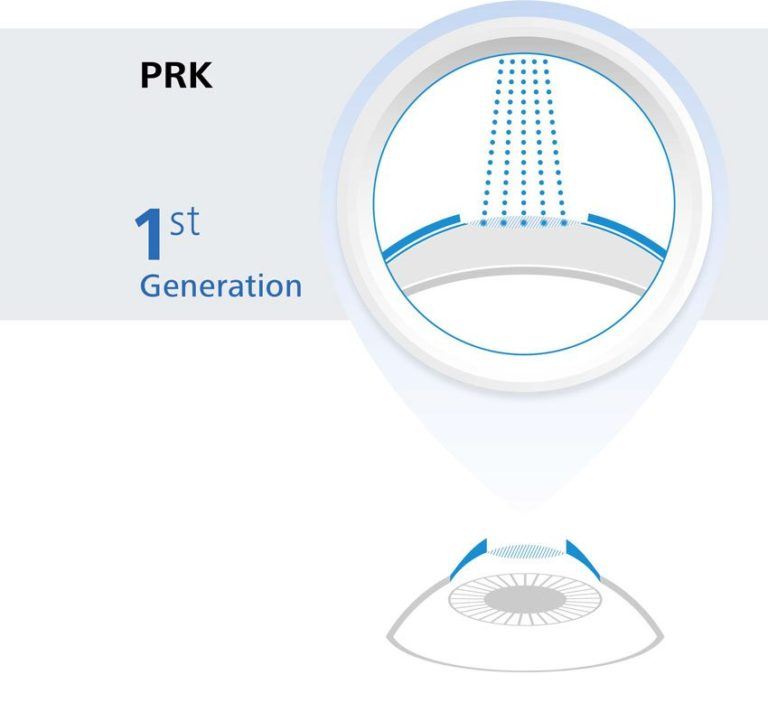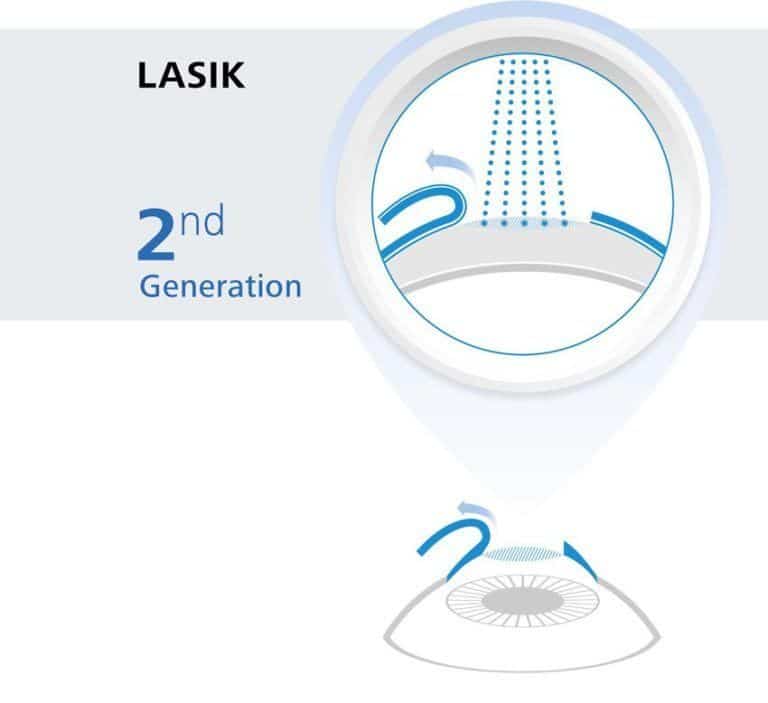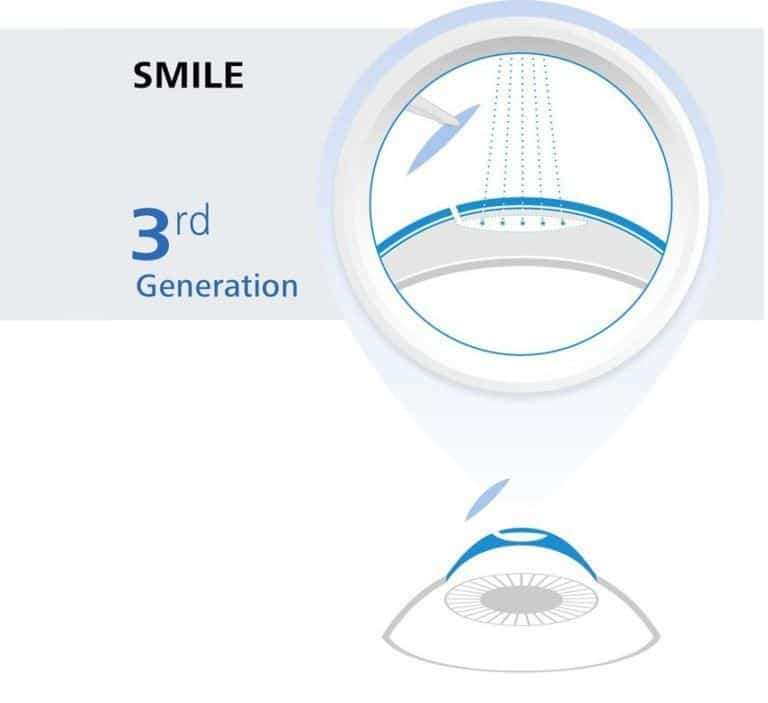Posted by: Manhattan LASIK Center
Are you considering laser vision correction? Have you heard of LASIK and PRK, but are wondering what all the fuss is about for the newest laser eye surgery: SMILE LASIK? We have just the right answers for you!
What is PRK?
PRK (Photorefractive Keratectomy) is a 1st generation laser vision correction procedure, that is used to treat nearsightedness, farsightedness, and astigmatism. PRK is for patients with the thin cornea and/or asymmetrically-shaped cornea who are usually unsuitable candidates for LASIK, and in some cases, SMILE. However, your surgeon may still choose PRK as the best treatment procedure for your laser vision correction, based on certain advantages it offers.

PRK doesn’t create a flap compared to LASIK which uses a femtosecond laser to create a small flap in the cornea. Instead of PRK, the laser removes a thin outer layer of the cornea called the epithelium. Soon after, the second layer of the cornea is reshaped with an excimer laser and a bandage contact lens is placed over the cornea for the next few days while the epithelial cells grow again underneath. The patient then returns to have the contact lens removed and their vision begins to improve daily.
For most PRK patients it normally takes about a week to achieve clearer vision. Patients will be provided with instructions from their surgeon restricting them from wearing makeup, working out, swimming, and other activities for several days. The biggest advantage to PRK is the patients don’t have to worry about any flap-related complications postoperatively. Patients can expect to experience dryness for a few months after their PRK procedure.
What is LASIK?
LASIK (Laser-Assisted Stromal In-situ Keratomileusis) is a 2nd generation laser vision correction procedure that most patients are familiar with. LASIK is used to treat nearsightedness, farsightedness, and astigmatism. LASIK is suitable for patients with adequate corneal thickness, symmetrically shaped corneas, and minimal dry eye.

LASIK is a two-step procedure, first with flap creation, followed by reshaping of the cornea. A small flap is created on the cornea with the use of a femtosecond laser. Then, an excimer laser is used to reshape corneal tissue to correct the patient’s refractive error. The patient then goes home to rest. The eye begins to heal overnight as they sleep and the patient is able to have a clear vision the very next day. The patient will have some post-op instructions, such as no swimming, no strenuous workouts, or wearing makeup per their surgeon’s direction. Like PRK patients, LASIK candidates also will experience dryness for a few months after surgery.
How is SMILE Different?
SMILE (Small Incision Lenticule Extraction) is a 3rd generation laser vision correction that combines the advantages of both PRK and LASIK. It can treat both nearsightedness and astigmatism. SMILE was introduced in 2012, and upon FDA’s approval, it has been practiced in the USA since 2016. Manhattan LASIK Center was the first center on the entire East Coast to perform SMILE, and to this day is the most experienced SMILE center in the nation.

Unlike PRK and LASIK, SMILE does not use the excimer laser and is a one-laser procedure. It uses the femtosecond laser to create a tiny incision on the cornea, which is used to extract a small piece of corneal tissue (the lenticular). This allows the procedure to be minimally invasive and drastically reduces the post-operative dryness for the patient.
With no flap creation or removal of a layer of the cornea, SMILE lessens the risk of post-surgery corneal complications. The surgery is odorless, painless, bladeless, and the results are predictable. SMILE patients go home to rest after their procedure and like LASIK patients they achieve clearer vision the next day. Like PRK patients, SMILE patients experience no flap-related complications postoperatively. Unlike PRK and LASIK patients, SMILE patients are able to return to normal activities, work out, wear eye makeup, and even swim the very next day!
Interested in exploring the different laser vision correction options, and learning which one is the best suited to your unique needs? Schedule a complimentary consultation now and get one more step closer to achieving a clear vision.

